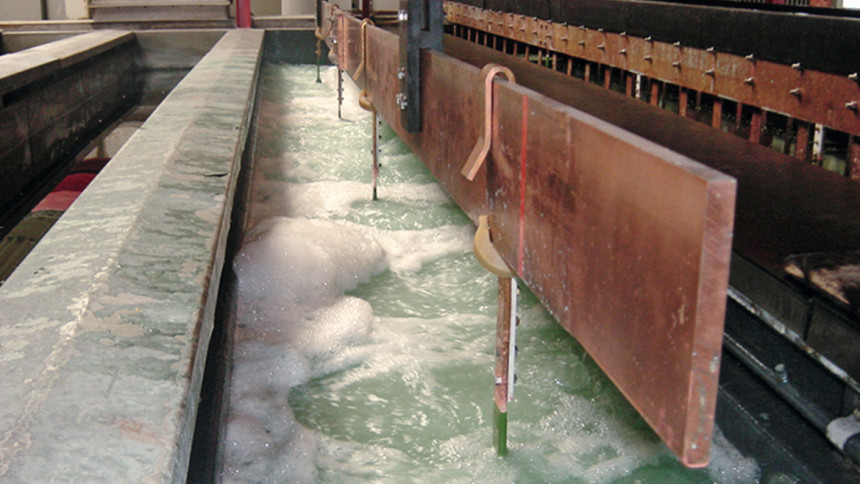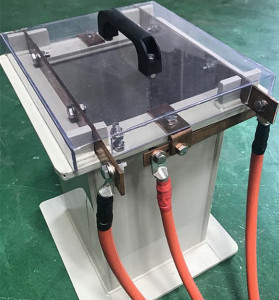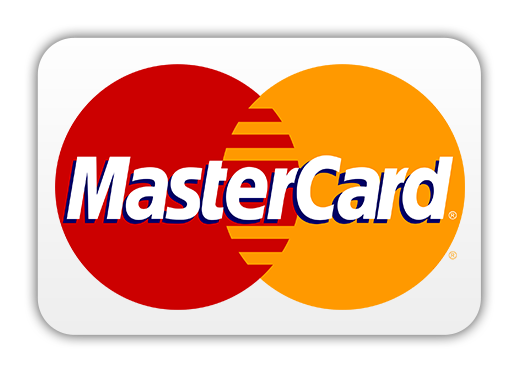Removing this material eliminates surface imperfections, embedded contaminants, sharp edges and burrs, and micro cracks and pits that could lead to corrosion. The process thus leaves behind a clean, smooth, polished, corrosion resistant and long-lasting surface.
Acid Etching
Surface etching of titanium has proven an effective method to obtain a clean and uniform surface, and enhance cytocompatibility by providing improved roughness, and hydrophilicity. As the acid etching process (Fig. 1) can be easily controlled, it has become one of the most common methods for surface modification of titanium. Influence of acid etching treatments on the superficial characteristics of titanium was investigated by Chrcanovic et al. [1]. Titanium neither reacts with cold mineral acids (HF, is the exception) nor with a hot alkali. However, it can be dissolved in hot HF, HCl, H2SO4, and H3PO4, and the dissolution normally accelerates as the acid concentration increases. Hydrofluoric acid is widely used as the primary chemical for etching titanium.
HF readily reacts with titanium forming titanium fluoride and hydrogen gas. The etching reaction can be shown as:
2Ti+6HF→2TiF3+3H2(g)
However, HF alone is seldomly used for etching due to slow etch rate and evolution of flammable hydrogen gas that quickly dissipates leading to hydrogen embrittlement. To offset these disadvantages, nitric acid is often added to the HF solution. This reaction can be presented as follows:
Ti+6HF+4HNO3→H2TiF6+4NO2(g)+4H2O(g)
The recommended etching solution for grade-2 titanium is 3-5 % HF with 10 % nitric acid. The etching rate is 24–45 µm/minute. The microstructure of the surface is highly modified by micro-roughness after acid etching. The surface roughness of the substrate metal surface is significantly enhanced after acid etching (0.124 µm Vs 0.137 -3.986 µm) [2]. A higher amplitude of roughness is observed with a combination of HF and HCl/H2SO4 at high concentrations and/or temperature for a considerable time.
A detailed study on the behaviour of acid etching on different surfaces of titanium by varying etching temperature and time was conducted by Lin et al. [3]. Surface topography and roughness were more proportional to etching temperature; however, diffusion of hydrogen and tensile strength are more time-related to titanium hydride formation on the surface. Titanium becomes more hydrophilic after etching even though the micro pits were not seen post etching. More and deeper cracks were found on the specimens with more hydrogen diffusion. Therefore, higher temperature and shorter time are an effective way to get a uniform surface and decrease the diffusion of hydrogen to prevent hydrogen embrittlement. Zahran et al. [4] investigated the effect of HF acid etching time (0–10 minutes) on titanium topography, surface chemistry, wettability, and cell adhesion. Roughness and wetting increased with etching time up to 7 minutes. Highest cell adhesion was achieved after 5–7 minutes of etching time. Wetting and cell adhesion were reduced on the highly rough surfaces after 10 minutes of etching.
Four types of treatments, polishing, sandblasting, concentrated sulfuric acid etching, and concentrated sulfuric acid etching with vacuum firing were investigated on CP-Ti disks [5]. Acid-etched surfaces showed higher roughness values than the sandblasted ones. There were no significant differences in cell proliferation and collagen production on CP-Ti among the different surface treatments employed. Based on the results, it was concluded that etching with concentrated sulfuric acid was a simple and effective way to roughen the surface of titanium while keeping up its biocompatibility.
A numerical model for acid-etching of titanium with statistical analyses of the actual roughness was developed by Kohler et al. [6]. The test variables studied were acid molarity, temperature, and exposure time. Characterization was carried out using scanning electron microscopy (SEM) and energy dispersive spectroscopy (EDS). Numerical methods and the bond graph approach were used in the analysis. An empirical numerical model is constructed for prediction of both mass etching and surface roughness. In a recent study, the parameters of acid etching on titanium dental implants were investigated [7]. The acid etching of the titanium alloy by only HF is found insufficient as it preferentially dissolves the α-phase and exposes the β-phase boundaries, decreasing the corrosion resistance of the alloy.
Shorter duration acid etching with H2SO4 + HCl at room temperature has a minimal effect on surface topography. No significant change in topography was observed even after 10 minutes of etching. Etching with a combination of acids (1 etching in HF at room temperature followed by 2 etching in H2SO4+HCl) at 60–80 °C for 5 minutes can produce micro- and nano-level topography in a shorter duration with a uniform etching of both α and β phases. Higher temperature acid etching improves the surface roughness by superimposing the micro- and nano-roughness on the macro roughness introduced by the sandblasting. Further, these surfaces are more hydrophilic and display an enhanced cytocompatibility. The typical roughness value and contact angle of different surface treatments on Ti6Al4V ELI alloy dental implant are presented in Table 1.
|
Surface Type |
Ra (µm) |
Contact Angle (°) |
|
Machined |
0.357 ± 0.132 |
110 ± 5 |
|
Sandblasted with large grit alumina particle 250–400 µm |
2.1 ± 1.1 |
100 ± 2 |
|
Sandblasted and acid-etched at room temperature for 10 minutes |
1.7 ± 1.2 |
70 ± 7 |
|
Sandblasted and acid-etched at higher temperature for 5 minutes |
1.6 ± 1.2 |
40 ± 3 |
Tab. 1: Ra value and contact angle of surfaces on Ti6Al4V ELI alloy
Electrochemical Polishing
Electropolishing of metal surfaces, often referred to as “reverse plating” process, is a benign alternative to mechanical treatment. It atomically removes the controlled amount of material from the outer layer of the job by anodic dissolution [8]. Schematic of electropolishing is illustrated in Figure 2. The anodic diffusion layer is thinner on micro-peaks than on micro-valleys. As a result, the peaks of roughness are dissolved faster, as higher density current passes through them. This provides a levelling effect. The minor surface imperfections, embedded contaminants, burrs, and pits are also removed during this process providing a smooth and bright surface free from grain boundary attack [9]. Three major steps are involved in a typical electrolytic polishing operation:![Fig. 2: Schematic of electropolishing illustrating the smoothing effect A represent the peak and B valley of the rough surface [9] gt 2023 06 089](/images/stories/Abo-2023-06/thumbnails/thumb_gt-2023-06-089.jpg) Fig. 2: Schematic of electropolishing illustrating the smoothing effect A represent the peak and B valley of the rough surface [9]
Fig. 2: Schematic of electropolishing illustrating the smoothing effect A represent the peak and B valley of the rough surface [9]
- Metal pre-treatment that includes vapour/ultrasonic solvent degreasing, alkaline and/or acid cleaning, spray washing, sand blasting, wire brushing, etc. to remove oils, lubricants, shop dirt, fingerprints, oxides, scales and other contaminants from the job surface.
- Main electrochemical polishing process, which is controlled by a combination of electrolyte composition, applied current/voltage and operating temperature.
- Post treatment to remove the chemical residues or by-products of electropolishing.
To achieve effective electropolishing, a viscous layer has to be formed at electrolyte/ substrate interfacial region. This is to control mass transport of ions in which the surface roughness attenuation can be reached. It is well-known that after electropolishing, the surface resists corrosion for a reasonably long time [10–12]. Titanium has been electrochemically polished in perchloric acid-based electrolytes, such as perchloric acid/acetic acid and perchloric acid/methanol/ethylene glycol systems [13, 14].
To achieve electropolishing of titanium in perchloric acid-acetic acid solutions anode potentials in excess of 20V are required to cause breakdown of the anodic film of TiO2 which protects the metal from dissolution at lower potentials [13]. SEM micrograph of the surface roughness of high purity titanium sheet in as-received condition, and electropolished at 28 V and 0.10 A/cm2, 40 °C, for 4 minutes is shown in Figure 3. The electrolyte was stirred at 300 rpm velocity [15]. Titanium can also be electropolished in perchloric acid-free electrolytes, for instance methanol/sulfuric acid and ethylene glycol/NaCl [16, 17].
It is often difficult to fabricate the critical implants by traditional machining, either owing to their complex nature or due to machining deformation that occurs while manufacturing [18]. The additive manufacturing methods, like selective laser melting (SLM) technique employing powdery metal and adhesive materials, have been used to manufacture an object layer by layer [19, 20]. The electropolishing of Ti6Al4V alloy fabricated by SLM was analysed by Zhang et al. [21] using the electrolyte containing perchloric acid, glacial acetic acid and distilled water with a volume ratio of 1:10:1.2. The electrolytic polishing conditions were as follows: current density: 0.3 A/cm2, temperature: 30 °C, and the spacing between the electrodes: 5 cm. The samples were polished for 5, 10, 15 and 20 minutes. Before electrochemical polishing, the samples were first ultrasonically cleaned in alcohol for 5 minutes. The influences of electropolishing time on the surface morphology, mass loss and corrosion performance were investigated. Table 2 presents the surface roughness and weight loss of the Ti6Al4V alloys with the different electropolishing processing times.
After electropolishing, the surface roughness of the Ti6Al4V alloy reduced markedly, with an electropolishing time of 15 minutes it reached minimal, showing an ideal polishing effect. The electropolishing mechanism of the Ti6Al4V alloy was the shedding of spherical particles on the alloy surface and the smoothing of projections parts under the electrochemical reaction. During electropolishing a thin oxide layer consisting of a mixture of titanium oxide (TiOX), aluminium oxide (Al2O3), and vanadium oxide (VOX) is formed on the alloy surface spontaneously, while the compositions of the oxide film changed with different electropolishing times. With an increasing electropolishing time, unstable and un-protective TiO and Ti2O3 are gradually oxidized to denser and more stable anatase or rutile TiO2. The content of vanadium in the oxide film increased and the valence elevated. As the electropolishing time increased, the corrosion resistance of the Ti6Al4V alloy in Ringer’s solution initially increased then decreased. The samples with a 15 minutes electropolishing time exhibited most favourable corrosion resistance.
|
Sample No. |
0 |
1 |
2 |
3 |
4 |
|
Polishing time (minutes) |
0 |
5 |
10 |
15 |
20 |
|
Roughness (Ra/μm) |
6.33 |
2.01 |
1.63 |
1.13 |
1.72 |
|
Weight loss (%) |
– |
5.98 |
10.82 |
14.76 |
16.29 |
|
Sample No. 0 represents the pristine sample without electrochemical polishing. |
|||||
Tab. 2: Surface roughness and weight loss of the Ti6Al4V alloys after electropolishing
![Fig. 3: SEM micrograph of titanium sheet (a) as-received, and (b) electropolished [15] gt 2023 06 090](/images/stories/Abo-2023-06/gt-2023-06-090.jpg) Fig. 3: SEM micrograph of titanium sheet (a) as-received, and (b) electropolished [15]
Fig. 3: SEM micrograph of titanium sheet (a) as-received, and (b) electropolished [15]
Electropolishing in ionic Liquids
Ionic liquids are considered as green electrolytes for the electropolishing of metals. They demonstrate a number of advantages in comparison with acid aqueous solutions and produce smooth mirror-like surfaces for diverse applications (medical instruments, special equipment, implants and prostheses, etc.). A wide window of electrochemical stability, recyclability, and tunability are some of the major benefits of ionic liquids application. Ionic liquids are defined as salts with relatively high conductivity compared to organic electrolyte media with low melting point below the boiling point of water [22]. Over the last two decades, these electrolytes have been used as a suitable medium for electrochemical reactions [23, 24]. An overview of the electropolishing literature of Ti, Ni, Pt, Cu, Al, U, Sn, Ag, Nb, stainless steel and other alloys in ionic liquids is given by Lebedeva et al. [25].
Deep eutectic solvents (DESs) are a subclass of ionic liquids that possess several attractive properties of ionic liquids, such as low melting point and volatility, high thermal stability and solubility for various substances, and ability to serve as a “designer solvent” [26]. DES systems are more environmentally friendly, less expensive and easier to prepare than ionic liquids. DESs are prepared by complexation of a quaternary ammonium salt (e.g., choline chloride) with a hydrogen-bond donor (e.g., amide, amine, alcohol, and carboxylic acid).
Karim [27] has reported an efficient electropolishing method of metallic titanium in a deep eutectic solvent. The DES solvent was prepared by mixing choline chloride (ChCl) and propylene glycol (PG) in a 1:2 mole ratio. The mixture was heated at 60 °C with continuous stirring till a homogeneous clear electrolyte was obtained. 1 cm2 titanium disk with 2 mm thickness was used as a working electrode and a cylindrical platinum as a counter electrode in a 10 ml electrolyte. The distance between the working and the counter electrodes was kept as 1 cm. Under optimum conditions, 10 V, room temperature, 40 minutes; a mirror-like surface finish was obtained. An average surface roughness (Ra) of 455.60 nm of the parent metallic Ti was reduced to 37.92 nm after electropolishing.
A potentiostatic electropolishing process for pure metallic titanium in two different electrolytic baths; choline chloride-ethanol (ChCl-eth) and choline chloride-methanol-butanol (ChCl-meth-but) in molar ratios of 1:4 and 1:6:2, respectively was reported [28]. The polishing was accomplished at the working voltages of 2 (for ChCl-eth) and 1.2 (for ChCl-meth-but) at 20 °C for 40 minutes. surface characterization studies revealed the nanoscale polishing of titanium surface. The roughness of pure metallic titanium (ca. 120.5 nm) was reduced to 0.10 nm in ChCl-eth and 0.66 nm in ChCl-meth-but.
Electrochemical polishing of Ti-based alloy using deep eutectic solvent, Ethaline was described by Kityk et al. [29]. The electropolishing treatment was performed in a potentiostatic mode (E = +3-4 V) at 25 °C for 30–40 minutes. Effective removal of surface defects and reduction of surface roughness was reported. The adjustment of processing time and electrode potential of electropolishing allows controllable and flexible tuning of the surface roughness and wettability of titanium alloy. The correlations between surface roughness coefficients and wettability parameters were established.
REFERENCES
[1]B.R. Chrcanovic; M.D. Martins: Study of the influence of acid etching treatments on the superficial characteristics of Ti, Mater. Res., 17(2014)2, 373–380,
doi: 10.1590/S1516-14392014005000042
[2]A. Jemat; M.J. Ghazali; M. Razali; Y. Otsuka: Effects of surface treatment on titanium alloys substrate by acid etching for dental implant, Mater. Sci. Forum, 819(2015), 347–352,
doi: 10.4028/www.scientific.net/MSF.819.347[3]X. Lin; L. Zhou; S. Li; H. Lu; X. Ding: Behavior of acid
etching on titanium: topography, hydrophility and hydrogen concentration, Biomed Mater., 9(2014)1, 015002,
doi: 10.1088/1748-6041/9/1/015002
[4]R. Zahran; J.I. Rosales Leal; M.A. Rodríguez Valverde; M.A. Cabrerizo Vílchez: Effect of hydrofluoric acid etching time on titanium topography, chemistry, wettability, and cell adhesion, PLoS ONE, 11(2016)11, e0165296,
doi: 10.1371/journal.pone.0165296
[5]Y. Iwaya; M. Machigashira; M. Kanbara; M. Miyamoto; K. Noguchi; Y. Izumi; S. Ban: Surface properties and biocompatibility of acid-etched titanium, Dent. Mater. J., 27(2008)3, 415–421, doi: 10.4012/dmj.27.415
[6]R. Kohler; K. Sowards; H. Medina: Numerical model for acid-etching of titanium: Engineering surface roughness for dental implants, J. Manuf. Process., 59(2020), 113–121,
doi: 10.1016/j.jmapro.2020.09.014
[7]P. Chauhan; V. Koul; N. Bhatnagar: Critical role of etching parameters in the evolution of nano micro SLA surface on the Ti6Al4V alloy dental implants, Materials, 14(2021)21, 6344, doi: 10.3390/ma14216344
[8]W.O. Karim; A.P. Abbott; S. Cihangir; K.S. Ryder: Electropolishing of nickel and cobalt in deep eutectic solvents, Trans. Inst. Met. Finish., 96(2018)4, 200–205,
doi: 10.1080/00202967.2018.1470400
[9]B. Chatterjee: Science and Industry of Electropolishing, Jahrbuch Oberflächentechnik, 71(2015), 77–93,
file:///C:/Users/DELL/Downloads/EelectropolishingPDF.pdf
[10]W. Han; F. Fang: Fundamental aspects and recent developments in electropolishing, Int. J. Mach. Tools Manuf.,
139 (2019), 1–23, doi: 10.1016/j.ijmachtools.2019.01.001
[11]A.P. Abbott; G. Capper; K.J. Mckenzie; A. Glidle; K.S. Ryder: Electropolishing of stainless steels in a choline chloride based ionic liquid: an electrochemical study with surface characterisation using SEM and atomic force microscopy, Phys. Chem. Chem. Phys. 8(2006)36, 4214–4221,
doi: 10.1039/B607763N
[12]A.P. Abbott; G. Capper; K.J. Mckenzie; K.S. Ryder: Voltametric and impedance studies of the electropolishing of type 316 stainless steel in a choline chloride based ionic liquid, Electrochem. Acta, 51(2006)21, 4420–4425,
doi: 10.1016/j.electacta.2005.12.030
[13]J.B. Mathieu; D. Landolt: Electropolishing of titanium in perchloric acid-acetic acid solution: II. Polarization behavior and stoichiometry, J. Electrochem. Soc. 125(1978)7,
1044–1049, doi: 10.1149/1.2131618
[14]N.S. Peighambardoust; F. Nasirpouri: Electrochemical behaviour of pure titanium in perchloric acid-methanol-ethylene glycol mixed solution, Trans. Inst. Met. Finish. 92(2014)3, 132–139, doi: 10.1179/0020296713Z.000000000135
[15]B. Chou; R. Jain; D. McGervey; U. Landau; G. Welsch: Electropolishing of titanium, The Electrochemical Society, 201st Meeting I1 - Fifth International Symposium on Chemical Mechanical Polishing (CMP), Philadelphia, PA, May 12–17, 2002, https://www.electrochem.org/dl/ma/201/pdfs/0384.pdf
[16]O. Piotrowski; C. Madore; D. Landolt: The mechanism of electropolishing of titanium in methanol-sulfuric acid electrolytes, J. Electrochem. Soc. 145(1998)7, 2362–2369,
doi: 10.1149/1.1838644
[17]D. Kim; K. Son; D. Sung; Y. Kim; W. Chung: The effect of added ethanol in ethylene glycol-NaCl electrolyte on titanium electropolishing, Corros. Sci. 98(2015), 1–25,
doi: 10.1016/j.corsci.2015.05.057
[18]S. Zhang; R.Z. Gui; Q.S. Wei; Y.S. Shi: Cracking behavior and formation mechanism of TC4 alloy formed by Selective Laser Melting, J. Mech. Eng., 49(2013)23, 21–27,
doi: 10.3901/jme.2013.23.021
[19]H. Attar; K.G. Prashanth; L.C. Zhang; M. Calin; I.V. Okulov; S. Scudino, C. Yang; J. Eckert: J. Mater. Sci. Technol., Effect of powder particle shape on the properties of in situ Ti-TiB composite materials produced by selective laser melting, 31(2015)10, 1001–1005, doi: 10.1016/j.jmst.2015.08.007
[20]S. Romankov; Y. Hayasaka; N. Hayashi: Effect of annealing treatment on the structure and properties of the nanograined TiN coatings produced by ultrasonic-based coating process, J. Alloys Compd, 495 (2010) 625–628,
doi: 10.1016/j.jallcom.2009.10.170
[21]Y. Zhang; J. Li; S. Che: Electropolishing mechanism of
Ti-6Al-4V alloy fabricated by selective laser melting,
Int. J. Electrochem. Sci.,13(2018) 4792–4807,
doi: 10.20964/2018.05.79
[22]F. Endres; A. Abbott; D. MacFarlane (Editors): Electrodeposition from Ionic Liquids, Wiley-VCH Verlag GmbH, (2017), 1–504, doi: 10.1002/9783527682706
[23]F. Endres; D. MacFarlane; A. Abbott (Editors): Electrodeposition from Ionic Liquids, Wiley‐VCH Verlag GmbH, (2008), 1–387, doi: 10.1002/9783527622917
[24]A.P. Abbott; G. Frisch; K.S. Ryder: Electroplating using ionic liquids. Annu. Rev. Mater. Res., 43(2013)1, 335–358,
doi: 10.1146/annurev-matsci-071312-121640
[25]O. Lebedeva; D. Kultin; A. Zakharov; L. Kustov: Advantages of electrochemical polishing of metals and alloys in ionic liquids, Metals, 11(2021)6, 959, doi: 10.3390/met11060959
[26]S.-H. Pyo; J. Chen; R. Ye; D.G. Hayes: Chapter 10, Sugar Esters, in Biobased Surfactants, D.G. Hayes, D.K.Y. Solaiman, R.D. Ashby (Editors), Second Edition, AOCS Press, (2019), 325–363, doi: 10.1016/B978-0-12-812705-6.00010-1
[27]W.O. Karim: Electropolishing of pure metallic titanium in a deep eutectic solvent, Arab. J. Chem., 14(2021)1, 102906,
doi: 10.1016/j.arabjc.2020.11.012
[28]W.O. Karim; J.A. Juma; K.M. Omer; N.N. Ahmad; D.A. Kader; B.B. Tofiq; S.B. Aziz: Novel electropolishing of pure metallic titanium in choline chloride-based various organic solvents, Denki Kagaku/ Electrochemistry, 89(2021)1, 67–70,
doi: 10.5796/electrochemistry.20-00120
[29]A. Kityk; V. Protsenko; F. Danilov; V. Pavlik; M. Hnatko;
J. Soltys: Enhancement of the surface characteristics of Ti-based biomedical alloy by electropolishing in environmentally friendly deep eutectic solvent (Ethaline), Colloids Surf. A Physicochem. Eng. Asp., 613, (2021), 126125,
doi: 10.1016/j.colsurfa.2020.126125














